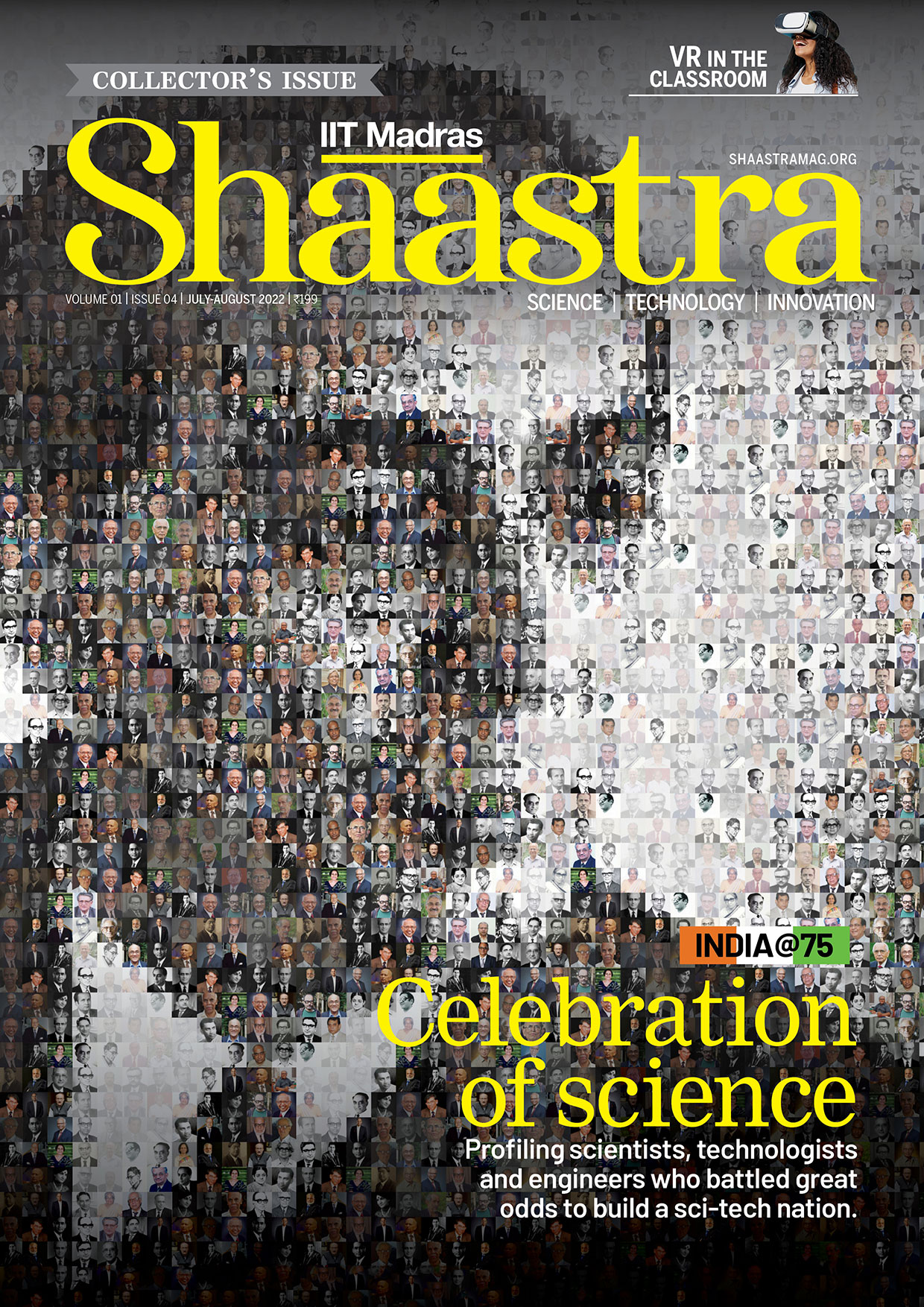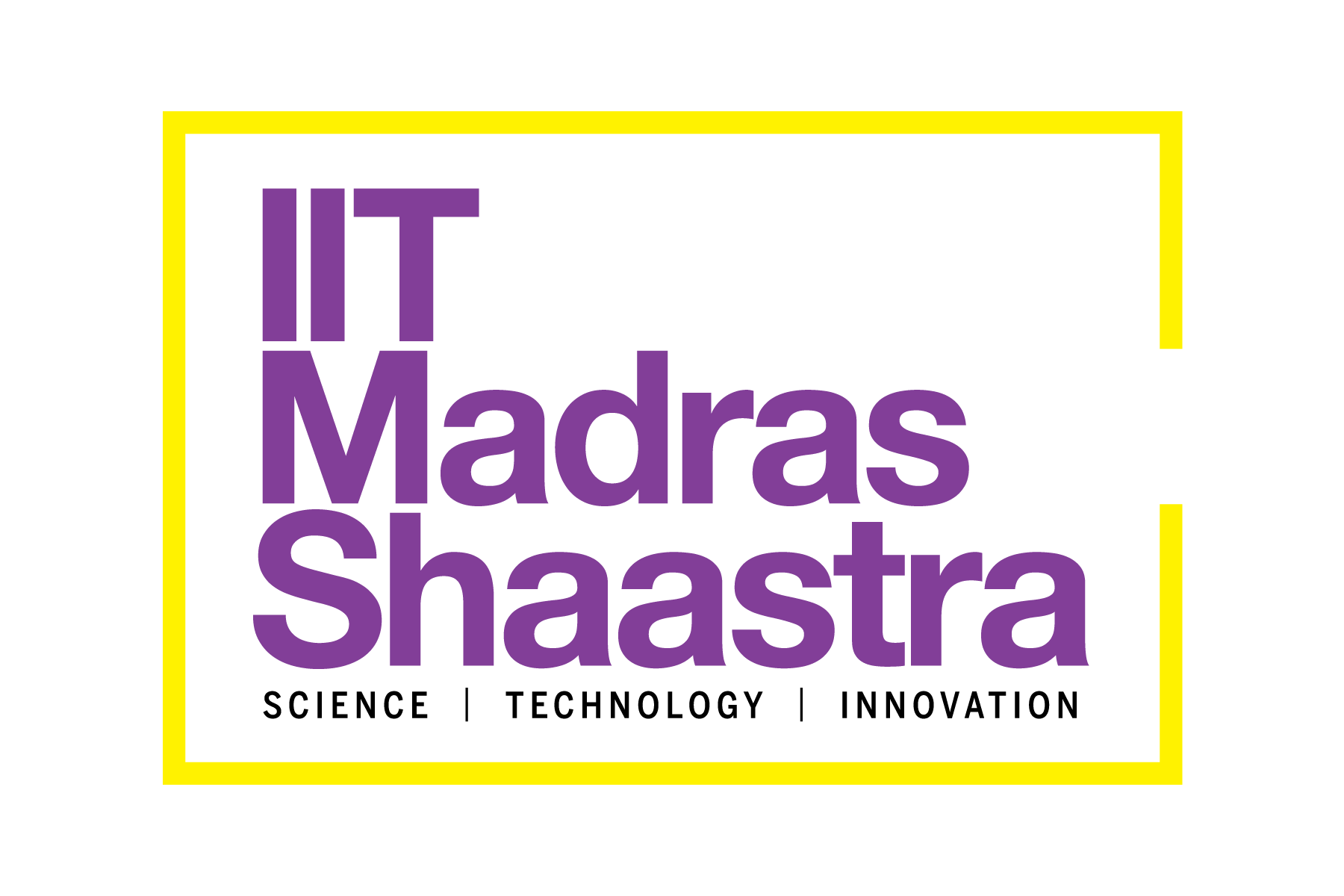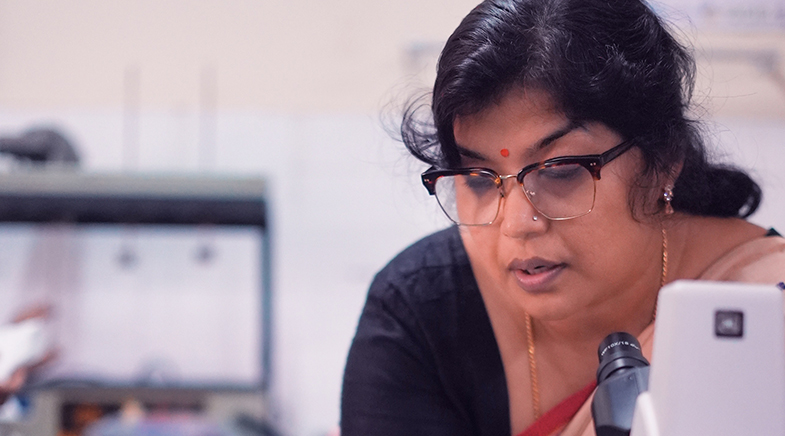Lighting the way
-
- from Shaastra :: vol 04 issue 06 :: Jul 2025

Scientists are harnessing photonics and metaoptics technologies — with game-changing impact.
Bijoy Krishna Das was drawn to integrated photonics as early as the mid-1990s, while working as a Project Research Associate at the Indian Institute of Technology Kharagpur. Those were early days for this field, which aimed to combine many optical functions on a single chip, thereby providing engineers with the ability to design complex circuits in a small area. Electronics reigned supreme at that time. Intel co-founder Gordon Moore had predicted, in an eponymous law, that the number of transistors in a chip would double every 18 months, therefore bringing continual improvements in the functions of devices. This law was expected to be valid for at least two more decades, but scientists had realised that moving photons – light particles – around in a chip was more efficient than moving electrons. They had begun to work on integrated photonics, although applications were far in the future.
Das had reached IIT Kharagpur after a Master's in physics. "It was fascinating to see how (the) microelectronics fabrication process for electronic IC fabrication could be leveraged to fabricate photonic ICs," says Das. "However, lack of experimental resources at IIT Kharagpur pushed me to look for a better place." It turned out to be in Germany, where Wolfgang Sohler at Paderborn University was developing cutting-edge technology in integrated optics, mainly using lithium niobate. Das made one more pivot after his PhD there, as he realised that silicon was a more appropriate material for his field, as it was relatively easy to manufacture, scale, and integrate with existing processes. Like many of his colleagues, he had encountered a problem that could be solved with photonics: the interconnects in a chip that were becoming a bottleneck to achieving higher processing speeds.
As transistors in chips shrank in line with Moore's Law, the interconnects also shrank with them, leading to overcrowding and delays in communications between the transistors. The solution to this problem was to use light for communication between the transistors, as photons do not interfere with each other when the interconnects are packed closely. Das, now a Professor at IIT Madras and Chief Investigator of the Centre for Programmable Photonic Integrated Circuits and Systems, has a prototype chip that uses light to connect between transistors. He is developing an ecosystem to manufacture it in partnership with the Malaysian foundry SilTerra.
PAST ISSUES - Free to Read


Have a
story idea?
Tell us.
Do you have a recent research paper or an idea for a science/technology-themed article that you'd like to tell us about?
GET IN TOUCH














